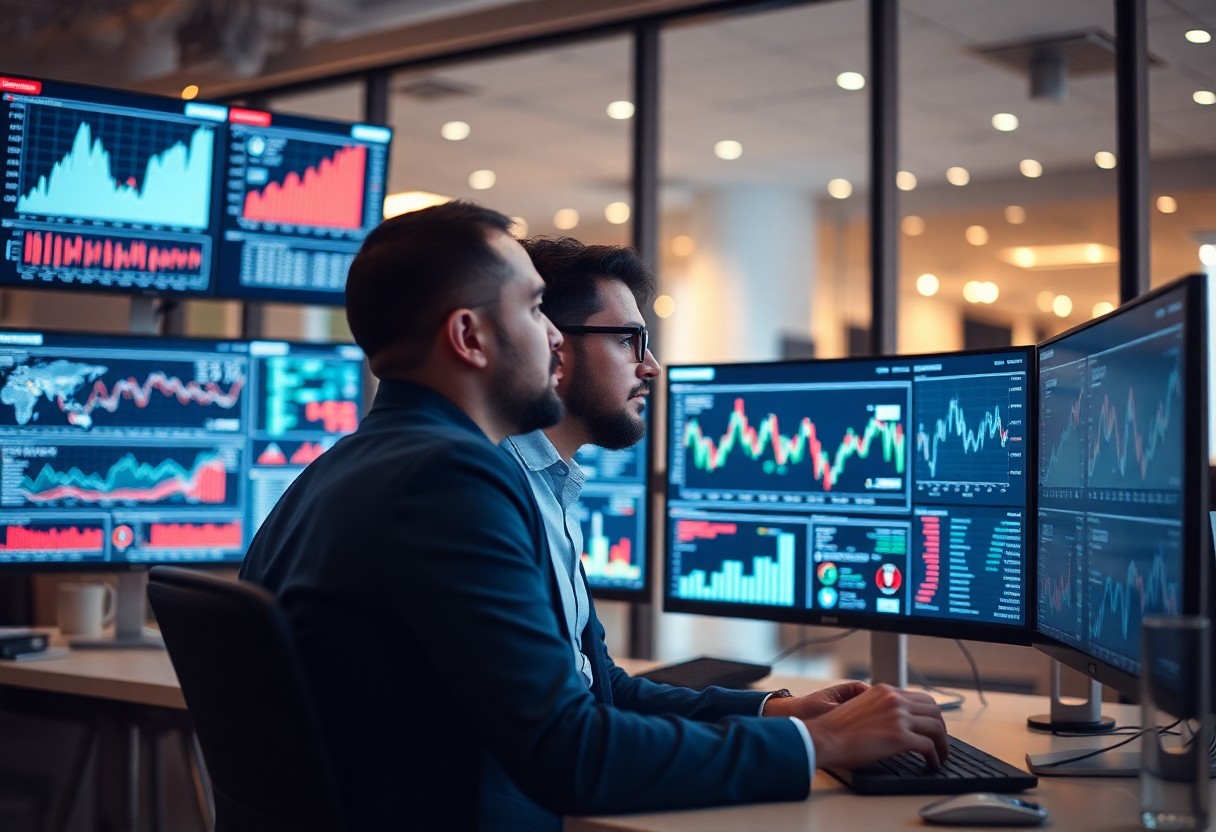
The Use of AI in Visual Marketing
With the rapid evolution of technology, artificial intelligence (AI) is increasingly becoming a game-changer in visual marketing. You can leverage AI tools to analyze consumer behavior, optimize content creation, and enhance user engagement. By harnessing these innovations, your brand can deliver personalized visual experiences that resonate with your audience. However, it’s vital to be aware of the potential pitfalls, such as over-reliance on automation and ethical concerns regarding data privacy. Knowing how to navigate these challenges can empower your visual marketing strategies for greater impact.
The Impact of AI on Visual Marketing
Your marketing strategies can be transformed by the use of AI, leading to improved engagement and higher conversion rates. AI tools analyze vast amounts of data, allowing you to understand consumer preferences and craft visuals that resonate with your target audience. This not only enhances the effectiveness of your campaigns but also paves the way for more innovative solutions in the visual marketing landscape.
Personalization through AI
Against traditional marketing techniques, AI empowers you to create highly personalized experiences for your audience. By analyzing user behavior and preferences, AI enables the delivery of tailored visuals that speak directly to individual needs, enhancing customer satisfaction and loyalty.
Enhanced Creativity and Design
Above the conventional design processes, AI opens new doors for creativity and innovation in visual marketing. With advanced algorithms, you can generate unique design elements and layouts that capture attention and convey your brand message effectively.
Another significant aspect of AI in visual marketing is its ability to augment your creative processes. By assisting in generating eye-catching graphics, AI tools help you explore various styles and formats quickly, thus accelerating your workflow. Additionally, AI can analyze the performance of visual content in real time, allowing you to make data-driven adjustments to enhance engagement. Importantly, this fusion of technology and creativity fosters a more dynamic approach to marketing, ensuring your brand stands out in a competitive landscape.
AI-Driven Tools for Visual Content Creation
While traditional visual content creation can be time-consuming and labor-intensive, AI-driven tools simplify the process significantly. These innovative technologies enable you to generate captivating graphics, animations, and manage your visual marketing campaigns more efficiently. By harnessing the power of algorithms, you can create high-quality visual content tailored to your brand’s identity, captivate your audience, and stay ahead of the competition.
Automated Image Generation
Generation of images through AI relies on advanced algorithms that can quickly produce diverse visuals based on your specifications. These tools utilize machine learning to understand style, color, and composition preferences, allowing you to create stunning images tailored to your marketing needs without requiring extensive graphic design skills.
Video Content Creation
Against the backdrop of evolving consumer preferences, video content creation has become increasingly important in visual marketing. AI plays a significant role in enhancing this medium, allowing you to produce engaging videos efficiently. From automating editing processes to generating personalized video content, AI tools can help you create high-quality visuals that resonate with your audience.
Another advantage of AI in video content creation lies in its ability to analyze viewer engagement and tailor content accordingly. With AI’s data-driven insights, you can identify which elements perform well, allowing you to refine your video strategies continuously. However, be cautious of over-reliance on automation, as it can lead to a lack of personal touch. Striking a balance between AI-generated content and authentic storytelling is imperative for fostering genuine connections with your audience.

Analyzing Consumer Behavior with AI
Clearly, understanding consumer behavior is vital for any successful visual marketing strategy. AI technologies provide valuable insights into how your audience interacts with your content, enabling you to tailor your visuals to fit their preferences. By analyzing patterns in engagement and feedback, you can enhance your marketing efforts and create more compelling campaigns that resonate with your target audience.
Predictive Analytics
An effective use of AI in marketing is through predictive analytics, where algorithms assess past consumer data to forecast future behaviors. By leveraging this information, you can anticipate your customers’ needs and adapt your visual marketing accordingly, making your campaigns more relevant and timely.
Emotion Recognition
Emotion recognition technology can play an important role in understanding your consumers on a deeper level. By analyzing facial expressions and body language in response to your visuals, AI can help you gauge the emotional resonance of your marketing materials.
At the core of emotion recognition is your ability to tap into genuine consumer reactions. This technology delivers insights that can enhance your campaigns by identifying which emotions your visuals evoke, allowing you to craft materials that elicit the desired responses. By targeting emotions like happiness, surprise, or nostalgia, you can optimize your visual content to strengthen connections with your audience, ensuring that your marketing efforts are more effective in engaging and converting potential customers.
Case Studies: Successful Implementation of AI in Visual Marketing
Many brands are harnessing the power of AI in visual marketing to enhance their strategies and achieve notable results. Here are some impressive case studies:
- Brand A increased customer engagement by 35% through personalized visual content.
- Brand B reported a 50% rise in conversion rates by utilizing AI-generated images.
- Brand C saw a 27% boost in social media shares after implementing AI-driven design analytics.
- Brand D decreased ad spend by 15% while improving click-through rates with AI-targeted visuals.
Brand A’s Transformation
For Brand A, leveraging AI resulted in transformative changes in their visual marketing approach. By analyzing customer behavior and preferences, they crafted personalized visual content that resonated with their audience, leading to a significant 35% increase in engagement metrics.
Brand B’s Innovative Campaigns
Behind Brand B’s success lies a series of innovative campaigns powered by AI. They employed AI-generated images tailored to customer preferences, which led to a remarkable 50% increase in conversion rates, showcasing the potency of technology in crafting visually appealing and targeted marketing materials.
It is necessary to note that Brand B’s implementation of AI was not without its challenges; however, the benefits far outweighed the risks. The personalization of imagery created a direct connection with consumers, addressing their unique needs while enhancing overall brand loyalty. Their strategy demonstrates how effective use of AI can revolutionize your marketing efforts, ultimately driving greater engagement and improving your bottom line.
Challenges and Ethical Considerations
Once again, as you explore the integration of AI in visual marketing, it’s vital to navigate the myriad challenges and ethical considerations that arise. With the potential for misuse and unintended consequences, you must stay vigilant regarding the implications of AI technologies on creativity, authenticity, and data ethics. Striking a balance between innovation and responsibility is vital for sustainable progress in this dynamic field.
Data Privacy Concerns
Privacy is a significant concern when implementing AI in visual marketing. You must be aware of the need to protect user data and secure informed consent, as mishandling personal information can lead to trust erosion and legal repercussions. Ensuring transparency about data usage while adhering to privacy regulations is vital for fostering positive relationships with your audience.
The Role of Human Creativity
Above all, human creativity remains irreplaceable in the visual marketing landscape. While AI can generate striking content, it is your unique perspective and emotional intelligence that cultivate meaningful connections with your audience. Embracing technology as a tool rather than a replacement for creativity enables you to enhance your marketing efforts while maintaining authenticity.
Considering the contributions of AI, it is important to recognize that it can assist in generating content but cannot replicate the emotional depth and contextual understanding that you bring to your work. Your ability to interpret trends, connect with individuals, and infuse originality into your visual storytelling is what sets your marketing apart. Leverage AI’s power to streamline tasks while ensuring that your vision and innovation shine through in your campaigns.

Future Trends in AI and Visual Marketing
All indications point towards a future where AI and visual marketing will become increasingly intertwined and sophisticated. As businesses harness the power of data-driven insights, you will see more personalized and engaging visual content that resonates with your audience. The integration of AI in creative processes will not only streamline production but also enhance the overall consumer experience, making it vital for brands to stay ahead of the curve.
Evolving Technologies
Across various industries, emerging technologies like augmented reality (AR) and virtual reality (VR) are reshaping visual marketing. These advanced tools allow you to create immersive experiences that captivate your audience, turning passive consumers into active participants in your brand story. By leveraging AI, you can tailor these technologies to meet your specific goals, ensuring a more engaging and effective marketing strategy.
New Consumer Preferences
The latest trends indicate that consumers are seeking authenticity and personalization in their visual interactions. They want to feel a connection to the brands they engage with, leading to a demand for relatable and genuine content that reflects their own values and experiences.
Consequently, brands face the challenge of adapting to these shifting consumer expectations. You must focus on delivering authentic and personalized experiences that resonate deeply with your audience. Utilizing AI, you can analyze customer feedback and trends to tailor your visual content accordingly, ensuring that it aligns with their preferences. Embracing this trend not only enhances your marketing strategy but also builds a stronger relationship with your customers, making them feel valued and understood.
1. AI personalizes visual content for targeted audiences.
2. Predictive analytics enhance visual marketing strategies effectively.
3. AI automates design processes, saving time and resources.
4. Image recognition improves audience engagement through smart insights.
5. Video content optimized by AI boosts viewer retention rates.
6. Real-time analytics measure campaign performance instantly.
Summing up
Presently, the integration of AI in visual marketing is transforming how you connect with your audience. By leveraging advanced technologies, you can enhance your content creation, personalization, and data analytics, making your campaigns more effective and engaging. It’s crucial for you to stay updated on these innovations to harness their potential fully, ensuring that your visual marketing strategies resonate with your target market. Embracing AI will not only streamline your processes but also elevate your brand presence in an increasingly competitive landscape.


